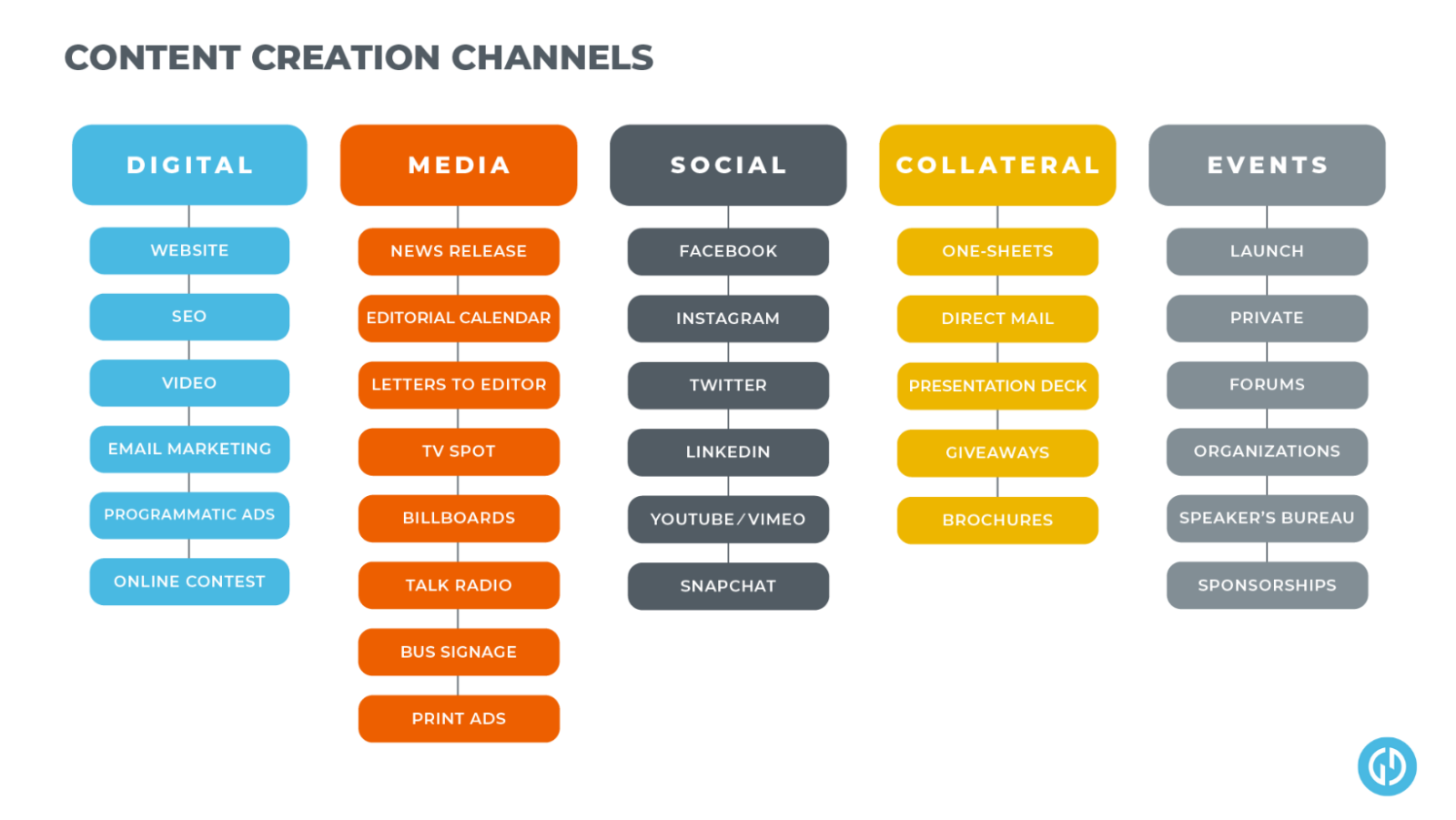The Art of Content Repurposing
04.13.23 · Greteman Group
There are countless avenues these days for content distribution. From blogging on your website, to writing newsletters, and trickling on down into the various forms of social media creation, it’s no difficult feat to get your messaging from your mind and out to your audience. But how do you stretch it out for all that it’s worth? That’s a completely different question, and it all starts with having a strong content repurposing system in place.
What is Content Repurposing?
Content repurposing involves taking your pillar and long-form pieces of content and dicing them into smaller, more bite-sized pieces of content that can be spread out over several avenues of brand communication.
Let’s use a blog post as an example.
The purpose of a blog post is two-fold. First and most importantly, it’s there to act as an educational piece of information for your audience and prospective customers. Secondly, blog posts assist in SEO optimization by reinforcing your brand’s authority and knowledge on the given topic.
But should your blog content solely live on your website? What happens if we take little bits of that blog post and spread it all around… say maybe include a recap and link to it in our next newsletter? And then we could also write a recap of that blog post on our personal LinkedIn profile as a Pulse article. And while we’re on LinkedIn, why don’t we create a post that leads back to that blog article to drum up some additional website traffic? But why just LinkedIn? Let’s find a creative way to talk about it on a livestream, or via an Instagram Reel. Maybe we could even create an entire Twitter thread discussing the topic and driving back to the blog post?
This is content repurposing. But how can you make it work well for your brand?

Create a System
The key to consistent repurposing is to create a system and put tactics into place to streamline it. When one task is finished, that cues the next task to begin. The copy for the blog is done? Now it needs images. It not only needs images to go inside the blog post itself, it also needs images that will be engaging on social media platforms and in the newsletter. If your brand live streams, you’ll want a matching thumbnail for your video. Think of all of the ways that your brand can use this one single blog post to educate the masses, and create a flow of tasks to make it happen. List out all of the items that will be needed from a single blog, and go from there.
There’s Strength in Consistency
Did you know that content repurposing strengthens your SEO standings in the eyes of Google? When it comes to SEO, consistency is key. As you’re writing the captions and naming the files of the images that you’ll be using, keep in mind that keyword optimization of these types of content also has a direct impact on search performance for your brand.
We see a lot of brands write a blog post, post about it on their social media, include it in their newsletter one time, and then forget it even exists on the website. What’s wrong with this? Missed opportunities! Most blog content remains evergreen for quite some time. This means that it’s always relevant, so it’s a smart idea to create new social posts and newsletter snippets to regularly lead back to these articles.
But how soon is too soon to re-share the blog post? Well, the answer depends on your audience and the platform. When it comes to Twitter, you can probably lead back to it every couple of weeks. On Facebook and LinkedIn, it would be smart to leave about two months between re-shares. Instagram Stories go away after 24 hours, so finding creative ways to re-share the topic each month is perfectly ok. (And it teaches your audience that you’re reliable about this subject!) Keep in mind that the more times you re-share this topic, the stronger your authority is in the eyes of not only Google, but your audience as well.
Ready to boost your content? Let us come up with a personalized strategy to maximize your content investment.
